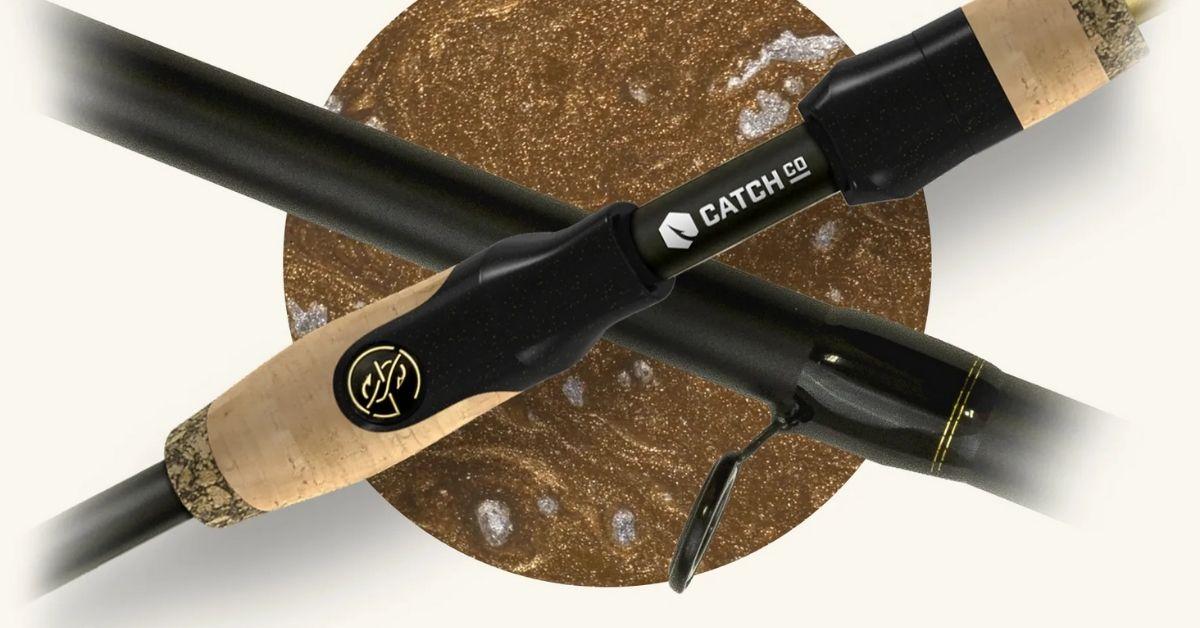Everything You Need To Know Before Buying A New Fishing Rod
Choosing the proper fishing rod is one of the most important, yet often overlooked, factors in having success out on the water. Being able to place your bait in a precise location, without spooking any fish, can have a huge impact on whether or not you are getting bites. Use the wrong rod and you might not be able to cast as far or accurately as possible. Use the right rod and you can land a cast on a dime and work your bait the way it was intended, which will also produce you more bites, catches, and fun.
While using the right rod, and a quality rod, might not instantly get you into the Bassmaster Classic, using an incorrect rod will definitely make it harder for you to put anything in your livewell. One of the most important reasons to have the right rod is bite detection. If you’re not using the right stick, you’ll often confuse snags, hangups and collisions with a bite, which is never fun, and can be embarrassing. Here's all you'll need to know before you buy a new fishing rod.
Rod Length
Fishing rod length is the first identified when choosing a new piece of equipment. Rods can range on the tiny end from 4 feet to the gigantic end of 14 feet, but most bass fishing rods tend to run between 6 and 8 feet measured tip to butt. The general rule of rod length selection is this: shorter rods cast shorter distances, and longer rods cast longer distances.
Why does that matter? Well, shorter rods are great for fishing in close combat, when you don't need to cast a distance. The shorter body also allows less bend and stretch when you are fighting a fish, so some anglers hunting big fish prefer them. Shorter rods are also preferable for kayak anglers looking to save space or anglers trolling for walleye or other species.
Longer rods are for covering more water and casting a great distance. They're great for walking baits, deep diving crankbaits, and other power fishing reaction baits. Saltwater anglers casting from piers or the surf commonly use longer rods. Bass anglers would use a longer rod to throw walking baits or anything else they are using to cover water quickly.
Rod Material
Googan Squad Gold Spinning Rod
Rods are generally made from graphite, fiberglass, or a combination of both. The graphite rods are typically lighter and stiffer, but tend to break more easily than their fiberglass counterparts. This brittle feel and lighter weight also make them more sensitive, and are typically better at detecting light bites. The heavier fiberglass rods have much more flexibility and some are virtually unbreakable. Rods are known to come in combinations of both materials, and for the angler who fishes in several different locations and conditions, the combination is the ideal rod.
Rod Power
Source: AllFishingBuy
The power describes how much it takes to actually bend the fishing rod. A rod with more power (sometimes referred to as taper or weight) will bend easier. The correct combination of power and action is essential to your baits working properly. The more power, the stiffer the backbone, the less likely to bend. You would want a rod with more power for fishing. Light or ultralight rods are geared more at smaller species like trout and panfish as they have more bend and you can more easily detect a bite. Moderate power rods are ideal for pairing more reaction based baits like crankbaits, jerkbaits, or spinnerbaits, as well as finesse presentations where you don't want to break the line. Heavier power rods are best suited to jigs, topwaters, frogs and anything else that requires less bend in the rod.
Explaining Rod Action
Source: AllProRods
Action can best be described as the point on the rod where it bends. A "fast" action rod will bend closer to the tip, and a "slow" action rod will bend closer to the butt. Most bass anglers lean towards faster action rods, as they have a stiffer backbone and are built more specifically for handling bigger fish that fight harder. Lighter action also allows you to feel more in the fight, so ultralight tackle when chasing bigger species can produce a unique angling thrill. Use faster action rods for baits with a single hook that require stronger, harder hooksets. And use slower action rods for moving baits with treble hooks.
Rod Handles
Googan Squad Green Casting Rod
Most rods come with a handle made from either cork, foam, or some combination of both. Anglers choose the feel of their handle strictly by personal preference. You can also choose from longer or shorter handle depending on the distance you are hoping to cast. A longer handle allows the angler to put both hands on the rod and rip it out there a mile. Shorter handles on your fishing rod are great for roll casting, casting with one hand, or looking for a precise cast at a shorter distance. There are also some rods that come with a "pistol" or "split" grip for targeting a precise cast at a short distance and giving the rod an overall lighter weight.
Updated June 7th, 2021 at 5:58 AM CT


